

DOME - a steep-sided, rounded extrusion of highly viscous lava squeezed out from a volcano and forming a dome-shaped or bulbous mass of congealed lava above and around the volcanic vent.
ERUPTION - the ejection of volcanic materials (lava, pyroclastics, volcanic gases) onto the earth’s surface. It is usually a violent phenomenon, although an eruption may be relatively calm.
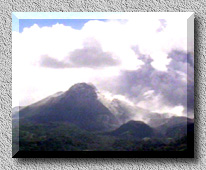
ERUPTION COLUMN - the initial form that an eruption cloud takes at the time of explosion.
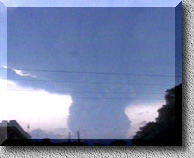
ERUPTION CLOUD - a gaseous cloud of volcanic ash and other pyroclastic fragments that is formed by volcanic explosion. FAULT - a surface or zone of rock fracture along which there has been displacement, from a few centimeters to a few kilometers in scale.
FLANK - refers to the sides of the volcanoes or mountain.
GULLY - an erosional channel or ravine.
HARMONIC TREMORS - continuous high frequency or low frequency tremors lasting five minutes or more. Harmonics are usually manifested during or immediately before violent eruptions.
HIGH FREQUENCY VOLCANIC QUAKES - volcanic quakes with frequency of more than 3 cycles per second. These quakes are usually associated with the fracturing of rocks beneath the volcano.
HYDROTHERMAL - of or pertaining to heated water, to its actions or to products related to its actions. In volcanology, the term has been restricted to heated water of magmatic origin.
LAVA - the red-hot molten rock materials violently or quietly extruded by a volcano. Lava is the term applied to magma when it finally reaches the earth’s surface.
LAHAR - An Indonesian term for rapidly flowing mixtures of volcanic materials and water. 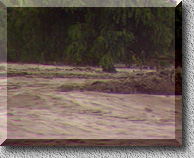
LOW FREQUENCY VOLCANIC QUAKES - Shallow volcanic quakes with a frequency of less than 3 cycles per second. These quakes are usually associated with movements of the volcano’s rising magma at shallow depths.
MAGMA - naturally occurring mobile molten rock materials, generated within the earth.
MUDFLOW - a flow of fine-grained, water saturated sediment in a stream channel. Common name for lahar.
PHIVOLCS - Philippine Institute of Volcanology and Seismology, the principal agency in charge of monitoring and studying the country’s several active volcanoes.
PUMICE - a white or gray, rock froth produced by the violent separation of gas from lava. Some of this froth is so light - because of the numerous gas bubbles - that it floats on water.
PYROCLASTIC - an adjective used to describe rock materials formed by fragmentation as a result of volcanic action.
PYROCLASTIC FLOW (PF) - a turbulent flowing mass of ejected fragmental volcanic materials mixed with hot gases and moving downslope at high speed (about 60 kph or more). PF may result from the collapse of tall eruption columns or from spillover of ejected materials from erupting vents.
QUAKE / EARTHQUAKE - a trembling or shaking of the earth produced by sudden breaking of rocks either by natural or man-made causes. This may be volcanic or tectonic in origin.
SEISMIC - a word describing the nature or characteristic of a given phenomenon or place as being of, subject to or caused by an earthquake.
SEISMICITY - the frequency and distribution of earthquakes. Also used in describing the relative susceptibility of a given site or place to earthquake occurences.
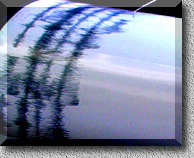
SEISMOGRAPH - an apparatus to measure and record ground movements as produced by natural or man-made causes. TREND - refers to the general direction of a given geologic structure.
STEAM - the invisible vapor into which water is converted when it boils. 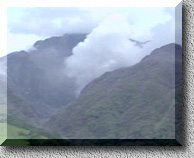
VENT - the opening of the earth’s surface through which volcanic materials are extruded.
VERTICAL ASH COLUMN - (see eruption column)
VOLCANIC QUAKE - ground movement created by volcanoes about to erupt, in the process of eruption or magma pressure built-up. It is classified into high frequency, long period, and harmonics.



Home | Pinatubo's Two Faces | Pre-Eruption Manifestation | Chronological Account | Aftermath | Facts and Trivia | Map | Philippine Volcanoes